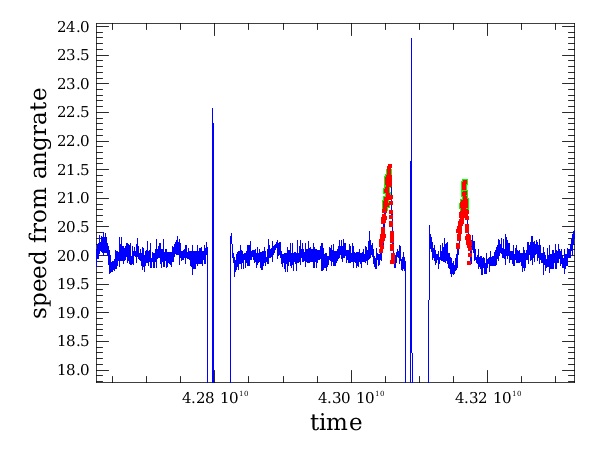The absolute pointing accuracy for Herschel is measured to be 2 arc-seconds at the 1-sigma level on pointed observations. However, some larger deviations, as large as 5 arc-seconds (solid shift), have been reported for some scan map observations. Deviations of the actual telescope pointing from the scan legs (great circles in the sky) that is reported in the pointing product cause a smearing of the PACS PSF in the reconstructed scanmap, in particular in the blue/green bands. The jittering along scan legs is estimated to be usually around 1 arcsec level, therefore the effect is rather small even in the blue band.
The scan speed profile sometimes exhibits significant bumps above the average speed, see example in Figure 3 on two different scan legs. These events are relatively rare. The cause of these jumps has been traced down to warm star tracker (STR) CCD pixels. When a guide star of 5-6 magnitude approaches such a pixel, the STR gets confused, producing a wrong attitude estimate. During the speed bump the attitude is unreliable and could be up to several tens of arcsec off.
The time interval during the speed bumps shall currently not be used in the map projection. HSC is investigating methods to propagate the gyroscope angular rate to reconstruct the right attitude during these bump.
The STR CCD temperature was lowered since OD320 to mitigate the effects of these warm pixels, no obvious speed bump has been observed since.
